The desire to accumulate physical objects seems to be inherent, present in the little girl who collects Barbie dolls or the late-night TV host who keeps 126 classic cars and motorcycles in a specially built garage. For some, the motive to search for and acquire a specific item is the sheer fun of the activity. Others seek mementos that stir memories of the past. Fewer still acquire rarities for investment, hoping for enormous profits over time.
Some collectibles are only available to the super-rich due to the cost of acquiring and keeping their purchases safe and secure. What was once available only to kings and queens is now owned by captains of industry, successful financiers, and entertainment moguls. Though individual collections can be worth millions of dollars, well beyond the financial capability of 99% of humanity, they remain fascinating to the majority. Exhibitions of a rare collection draw thousands of visitors, each eager to view the individual pieces up close and personal.
For a look at 10 of the most noteworthy types of collections in the world, check out the following list:
Caveats Regarding Values
Many of the world’s most valuable collections are held by religious organizations, museums, and governments around the world. For example, the Vatican owns such priceless art pieces as Raphael’s “The Transfiguration,” Caravaggio’s “Deposition,” and Leonardo da Vinci’s “St. Jerome in the Desert.” The “Mona Lisa” by da Vinci is held in the Louvre Museum in Paris and is considered by many to be the most precious painting in the world – worth up to $2 billion. The U.K. government owns the British Crown Jewels, which are valued at an estimated £3billion ($3.8 billion USD).
The following list is limited to collections in private hands. Nevertheless, readers should be aware that a listing of valuable collections by market value is necessarily tentative for many reasons:
- Anonymity. Most owners of precious objects keep their identity private. Transactions generally occur in secret negotiations between agents of buyers and sellers or through public auctions under the same confidentiality procedures.
- Indeterminate Holdings. Most collections are built one piece at a time over many years and items from collections that come up for sale are often sold individually, rather than as a set. As a consequence, it is impossible to know how many pieces an individual collector might own at any time. Additionally, collectors often lend their rare possessions to museums and galleries for display without attribution of ownership.
- Changing Values. Prices of collectibles are generally estimated by the amount paid for a similar piece in a public sale, usually an auction by one of the premier auction houses. Pre-sale estimates of value are notoriously inaccurate with auctioneers deliberately setting low prices to draw bidders. For example, the 2018 auction price for Philip Guston’s “Window” was $2.6 million, 118% above the original price estimate.
- Quality Versus Quantity. The number of objects in a collection is not an accurate indication of worth due to the wide variation in the value of a single object. For example, one collector may have five paintings, each worth tens of millions of dollars, while another has a thousand pieces of lesser-known artists with less market interest.
Most Valuable Types of Collections in the World
Identifying the most valuable collections in the world can be a cumbersome and tricky task. For instance, fine art is in a unique category since a single painting can have a market value higher than an entire collection of other precious collectibles. As a consequence, the following list of collections is delineated by type to create a broader perspective:
1. Fine Art
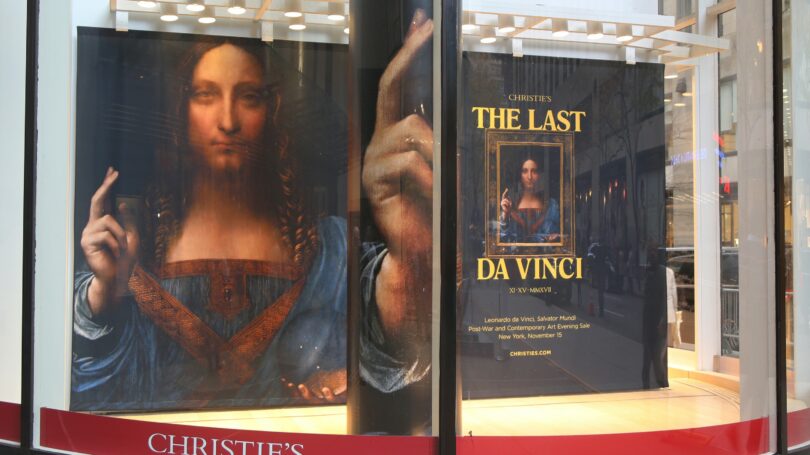
To make the top 10 list of art collections, a collector must be a billionaire since a single painting can sell for more than $100 million at auction. The highest price ever paid at auction for a painting was “Salvator Mundi” by Leonardo da Vinci, which sold at Christie’s in 2017 for $450,312,500.
Wildenstein Collection
The Wildenstein collection has an estimated value of $10 billion and includes such pieces as Manet’s “Cafe Concert Singer” and Caravaggio’s “The Lute Player.” French art dealer Nathan Wildenstein began collecting in 1905, eventually assembling one of the world’s most significant collections of Old Masters and Impressionist works. Due to the family’s secrecy and efforts to reduce inheritance taxes and divorce settlements, the extent of the collection is unknown.
Others with art collections estimated to be worth at least $1 billion include:
- Ezra and David Nahman. Though billionaire art dealers, the Syrian-born Jewish brothers are not considered art lovers. The brothers treat artistic works as products to be sold for a profit, according to a 2007 article in Forbes. Their collection is estimated to be over 5,000 pieces, including 300 Picassos valued around $900 million. The estimated value of the collection is $3.3 billion.
- David Geffen. The American record producer is reputed to be the most astute buyer and seller in the art world. Geffen concentrates on American artists including Pollock, de Kooning, and Rothko. Despite selling Pollock’s “No. 5, 1948” and de Kooning’s “Woman III,” the collection of abstract impressionist paintings remains unique. The estimated value is $2.3 billion.
- Eli Broad. The self-made American billionaire began his collection in 1973 with one of Vincent van Gogh’s “White Cottages at Saintes-Maries” series. He currently has over 8,000 pieces of artists ranging from Picasso to Andy Warhol, with an estimated value of $2.2 billion.
- Philip Niarchos. The eldest son of Greek shipping giant Stavros Niarchos inherited and expanded the art collection begun by his father. The collection reputedly included the largest collection of Van Gogh’s work and is valued at $2.2 billion.
- Francois-Henri Pinault. The French billionaire entrepreneur owns more than 2,000 pieces of contemporary art, including works by Damien Hirst, Andy Warhol, Gerhard Richter, Cindy Sherman, Jeff Koons, Agnes Martin, and Cy Twombly. Pinault is a very generous and public collector, lending pieces of his $1.4 billion-dollar collection to museums for exhibitions around the world.
- Steve Cohen. The American-born hedge fund owner and his wife Alex began collecting post-impressionist and modern art in 2013. The collection, displayed in his offices and home, has an estimated value of $1 billion and includes Gauguin’s “Bathers,” Van Gogh’s “Young Peasant Woman,” and Damien Hirst’s “The Physical Possibility of Death In the Mind of Someone Living.”
2. Rare Coins
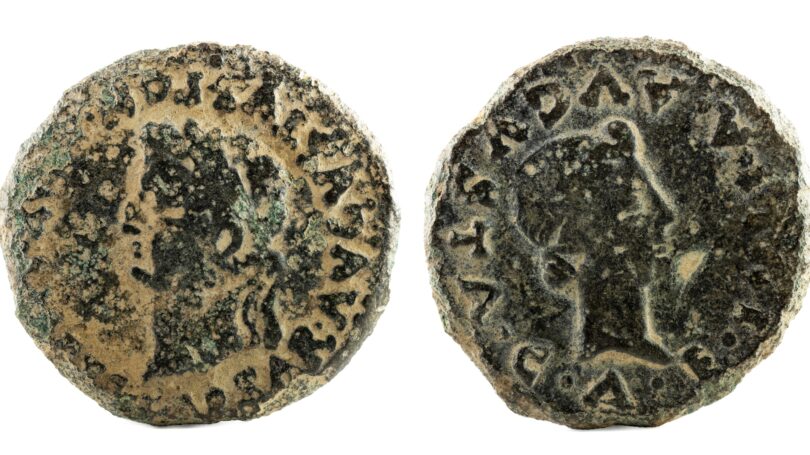
While the number of coin collectors is thought to have waned from its peak in the mid-1970s, numismatics (coin collectors) remain one of the world’s most avid collectors, even enjoying their own version of the Academy Awards – the annual dinner gala of the American Numismatic Society.
According to CoinWeek, there are at least 5,000 coin companies in the United States alone with an estimated annual market over $3 billion. The coin auction house Heritage Auctions of Dallas claims to be the largest, with sales of almost $200 million annually. The most valuable coin in the world is the United States 1794 Flowing Hair Silver Dollar and is considered to be in its original mint state condition. The coin sold at auction for $10,016,875 on January 24, 2013.
Valuable coins are more convenient for safe storage and transport, so owners frequently trade in kind to fill out a collection, increasing the difficulty of valuing an individual collection. Many considered the coins assembled by Texas developer Mack Pogue and his son to be the most valuable collection of American coins with an estimated value of $200 million. It was later sold in a series of auctions between 2015 and 2016, as reported by New York Daily News. Other past contenders for the title for the world’s most valuable private collection of coins have included Harry W. Bass – known for his collection of American gold coins – and John Jay Pittman, the rumored buyer of King Farouk’s collection in 1954.
Tyrant Collection
Rumors of a new collection circulated among numismatic circles for years before coin dealer Ira Goldberg in 2017 notified the market of an extraordinary collection of coins from around the world. Goldberg, representing a still-anonymous buyer, worked for 15 years to assemble rare and collectible coins from across numerous centuries and past civilizations. Numismatics consider their result, the Tyrant Collection, the most valuable private set of coinage ever assembled. Goldberg estimates its value to be worth “hundreds of millions of dollars,” according to CoinWeek.
The collection is named after tyrant rulers – emperors and empresses, kings and queens, czars and czarinas, dictators, popes, caliphs, sultans, and khans – who issued the coins. Gold and silver coins with their names and images were visual proof of their power over vast territories and populations.
The set is sub-divided into sections based on the geographic location of the ruler:
- Tyrants of the Thames. This section is focused on English coins and contains hundreds of specimens from every English ruler for the last 1,400 years. The most valuable coins are a proof set – coins made with a specially treated die multiple times to ensure an exceptional mirror-like appearance – of King Edward VIII, never publicly issued due to the King’s abdication to marry a divorcee in 1936. Five complete proof sets were minted. Aside from the proof set in this collection, the other owners are Queen Elizabeth, the Royal Mint, and the British Museum. The fifth set was broken up and sold as individual coins. The coins were exhibited for the first time in 2017.
- Tyrants of the Tigris and Euphrates. Coins from 16 separate dynasties over 2,500 years, from Cyrus the Great in 546 BCE to Saddam Hussein in 2003 CE, are included in this section. The geographic area covered spans from Turkey to Afghanistan and from the Caspian and Black Seas on the north to Iran on the south. The coins were initially exhibited in 2018.
- Tyrants of the Tyrrhenian and Adriatic Seas. This section, also displayed in 2018, contains 365 coins from empires in Italy and Sicily including Venice, Milan, Florence, and Naples. The collection includes all of the gold Ducats issued by the Venetian Doges – Chief Magistrates of the City of Venice – including a Zecchino issued by Giovanni I. One side of the coin depicts the Doge being blessed by St. Mark and the other depicts Christ giving a benediction.
The collector has indicated an intention to display additional sections – Tyrants of the Nile, Tyrants of the Aegean, Tyrants of the Tiber, and Tyrants of the Seine – in future years.
3. Thoroughbred Horses

Horse racing has long attracted the wealthy and powerful of the world. Historians date the sport to the domestication of the animal in the western Eurasian steppes over 100,000 years ago. Both chariot and bareback races were part of the Olympic Games in Greece, but the latter came into its own in England during the reign of Richard the Lionheart – from 1189 to 1899 – who offered the first purse to the winner over a 3-mile course.
Thoroughbreds are thought to have evolved from a mixture of English, Arabian, Barb, and Turk horses imported to England around 1700. By the mid-1700s, stud books and proof of pedigree were common following the formation of the classic English races – the St. Leger, the Oaks, and the Derby. The sport was popular in America before the American Revolution but lacked formality. The American Triple Crown, which includes the Belmont Stakes, the Preakness Stakes, and the Kentucky Derby, was created during eight years between 1867 and 1875.
While horse racing is enjoyed by fans of all incomes, the most valuable collections of horses are owned by multi-billionaires whose wealth was either inherited or built through other businesses. For instance, Bob McNair was a successful entrepreneur who subsequently purchased the NFL Houston Texans as well as the Stonerside Stables in Kentucky. McNair sold his two racing facilities in upstate New York and Kentucky to the Ruler of Dubai for an estimated $60 million, excluding improvements and bloodstock in 2007 and 2008.
Godolphin Racing
Despite the abundance of billionaires in the sport, the unquestioned most valuable thoroughbred operation is Godolphin Racing, owned by Sheik Mohammed bin Rashid al Maktoum. The ruler of the Emirate of Dubai (and Prime Minister of the United Arab Emirates) has the most extensive horse breeding operation in the world with facilities in six countries and more than 1,000 studs and broodmares. The Sheik also founded and continues to support the Dubai World Cup, the world’s richest horse race.
4. Jewelry and Gems
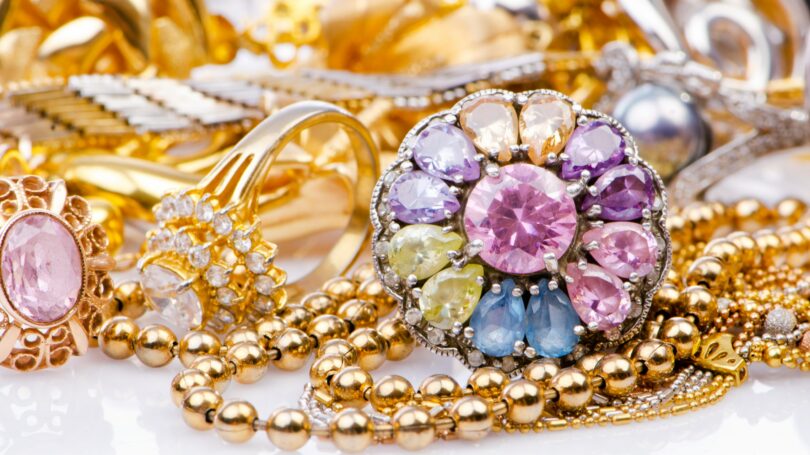
Marilyn Monroe expressed the sentiments of collectors when she sang “Men grow cold as girls grow cold. And we all lose our charms in the end, but square-cut or pear-shaped, these rocks don’t lose their shape. Diamonds are a girl’s best friend.” The combination of gold, silver, and precious stones – diamonds, rubies, emeralds, sapphires, and pearls – has drawn men since early times as symbols of wealth, power, beauty and protection from evil spirits.
For most of history, gems were carried or worn from the ears, neck, wrist, or ankle. Stone polishing was an early finishing technique, thought have to have discovered by observing the effect of stones rolling across a river bottom. Faceting – the skill of cutting gemstones to specific configurations – developed in the late 14th century. The technique transformed diamonds especially, leading to diamonds replacing rubies as the most desired precious gem. During the 20th century, platinum generally replaced silver as a setting due to its lack of tarnishing and greater strength.
As metallurgy techniques developed, gems were inset into crowns, rings, clasps, brooches, and belt buckles. Today, precious gems are sewn into all varieties of objects such as the Nightingale of Kuala Lumpur, a red dress of silk and chiffon that contains more than 750 diamonds and has an estimated retail cost of $30 million, and a Hot Wheels car of 18-carat white gold encrusted with more than 2,700 diamonds.
FM Holdings
Identifying the most valuable jewelry collections is impossible due to the extreme secrecy of the owners and the practice of using surrogates as agents. Few owners other than jewelers – who consider their collections as inventory – are identified at auction sales, and the parties of a private transaction are equally untraceable. For example, of the five most valuable gemstones in the world, only the owners of the Bahai Emerald and the Guinness Emerald have been identified as being owned by the mining company Fura Gems, according to the Russian news site RT.
Nevertheless, FM Holdings, a company co-owned by American businessmen Kit Morrison, Todd Armstrong, and Jerry Ferrera, has to be considered at the top of the list for most valuable jewelry collections. As a consequence of a 2018 California lawsuit, the private company received ownership of the massive Bahia Emerald, a 750-pound stone with 1.7 million carats at an estimated value of more than $500 million, according to the L.A. Times. Being unlikely that the emerald is the only stone in their collection, the combined market values are considerably more than the value of the Bahia Emerald.
Before a Christie’s auction in December of 2011, it is likely that film actress Elizabeth Taylor could claim the title of the most valuable jewelry collection. According to Forbes, the proceeds of the auction of her jewelry totaled almost $157 million. Many of the auctioned items were gifts from actor Richard Burton. The Christie’s sale lasted two days and included Taylor’s iconic D-color, 3319-carat diamond engagement ring and her 16th-century La Peregrina pearl.
5. Stamps
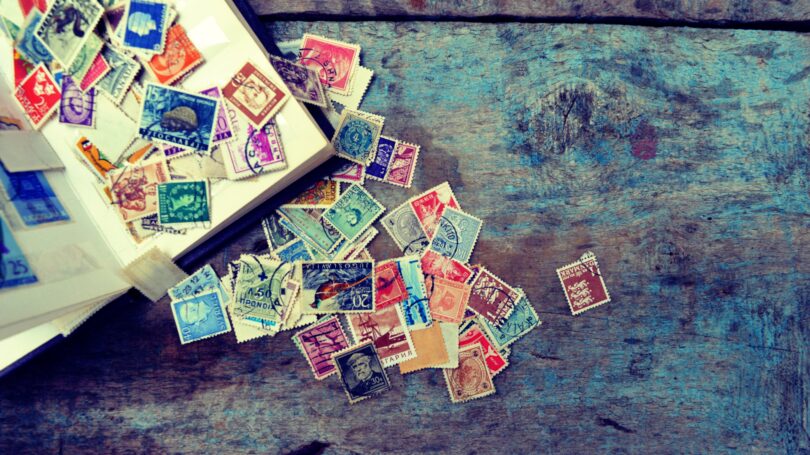
Rare stamps are among the super-rich’s most popular collectibles due to their rarity, ease of transport and storage, and anonymity. According to Richard Lehmann of Forbes, the high-end market for stamps is increasing rapidly since their analysis shows “that the more expensive a stamp is, the more rapidly it tends to appreciate.”
China and Saudi Arabia have become a hotbed of rare stamp collectors with the emergence of young billionaires searching for investments, according to a study by Barclays. The proportion of collectibles in the portfolios (17%) of wealthy Chinese and Arabs is almost double the percentage held by western collectors.
Collections are rarely exhibited as a set and generally without ownership details. As a consequence, identifying the most valuable collection is difficult, if not impossible. While philately (the collection and study of postage stamps) is enjoyed by millions around the world, the most valuable collections are often determined in hindsight when the pieces of a collection come to market.
Claimants for the most valuable collection of rare stamps in the past decade include:
- Thurston Twigg-Smith. The owner and publisher of the Honolulu Advertiser and the former son of Hawaiian missionaries specialized in Hawaiian issues. His most valuable stamps were the Hawaiian Missionary series. Stamps from his collections were auctioned at least three times, the first time in 1995 (proceeds unknown), a second time in 2007 for almost $9 million, and a third time in 2009 for $4 million.
- Sir Cyril Humphrey Cripps. The former CEO of Velcro began collecting rare British and Virgin Islands stamps in 1972, initially acquiring the Post Office Mauritius 2d blue for £29,000, equivalent to $37,136 USD in 2019. Named after one of Cripps’ companies, the Chartwell Collection came to auction in 2011 and 2012 as separate pieces. Sir Humphrey’s 80 albums of stamps included the finest specimen of “penny black” covers dated to the beginning of the British modern postal service in 1840 and considered to be the world’s first stamp. A series of auction proceeds through 2012 of the collection exceeded £18 million, set at $23.4 million USD.
- William J. Gross. The billionaire fund manager auctioned 103 stamps from his collection in 2018 for over $10 million – the record for a single-day stamp sale. The collection included four blocks of six 1918 24-Cent Inverted Jennys, an 1860 Pony Express cover, and a 10-Cent George Washington Stamp – one of the first stamps produced by the U.S. Government. The value of his collection in 2018 was $42 million, according to a report by Reuters.
While the content and value of their stamp collections are unknown, several notable individuals were active buyers in the Gross auction and are expected to have multi-million-dollar collections based upon individual purchases in recent years:
- Stuart Weitzman. The luxury shoe designer stunned the philatelist community with the purchase of the British Guiana One-Cent Black on Magenta sold at auction in 2014 for $9.48 million. He had previously acknowledged ownership of a plate block of the 24-Cent Inverted Jennys. The breadth of his collection is unknown but considered one of the most valuable in the world, according to NPR.
- Arthur Przybyl. The CEO of ANI Pharmaceuticals Inc. purchased an 1851 Two-Cent Blue Hawaiian Missionary for $619,000. Other Przybyl holdings are unknown.
- Gordon Eubanks. A tech entrepreneur best known for being the CEO of Symantec, Eubanks purchased the 10-Cent 1847 Bible Block for $590,000, spending more than $1.2 million at the auction.
Undoubtedly, there are private collections worth millions of dollars hidden from public view. Almost 40% of active collectors reside in Asia, and the auction market is very active. Singapore printing firm owner Richard Tan has spent £1.4 million ($1.8 million USD) on his collection over the past two decades. According to the BBC, he has “a prize-winning collection worth millions.”
6. Fabergé Eggs
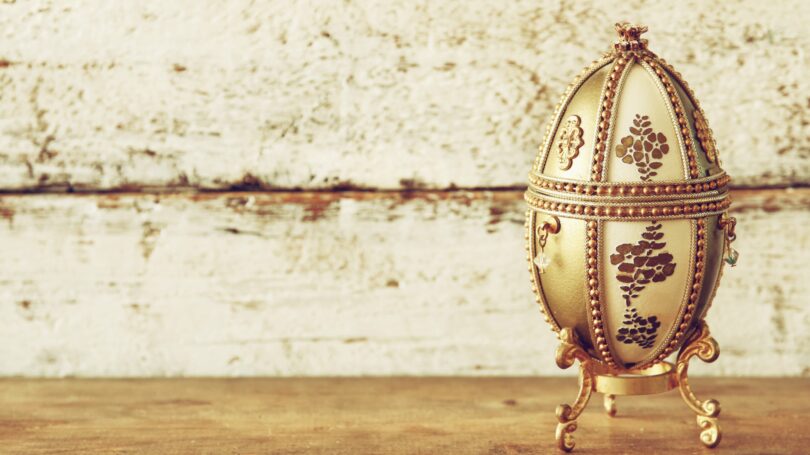
Between 1885 and 1917, Russian jeweler Peter Carl Fabergé produced 65 gold Easter eggs, 50 for Tsar Alexander III and Nicholas II as annual Easter gifts for Tsarinas Maria and Alexandra (the Imperial collection). Seven were made for Russian industrialist Alexander Kelch. Others who commissioned the jeweled masterpiece eggs include Consuelo Vanderbilt, the Rothschild family, and Dr. Emanuel Nobel, nephew of Alfred Nobel of the Nobel Prize.
Following the Russian Revolution in 1917, the Imperial eggs were all lost until 40 were found in a government warehouse. To date, all but seven of the original 65 have been found. In 1922, the government sold 30 of the eggs to foreign collectors and the 10 remaining are held in the Kremlin Armory Museum in Moscow.
Armand Hammer, the founder and CEO of Occidental Petroleum, bought 10 of the 30 offered for sale by the Russian government and subsequently sold them over the following decade to wealthy Americans like Lillian Thomas Pratt, the wife of a GM executive who later donated her five eggs to the Virginia Museum of Fine Arts, two to Marjorie Merriweather Post, and two to Jack Linsky, creator of Swingline staplers. Four eggs reside in Queen Elizabeth’s Royal Collection.
Victor Vekselberg
Starting in 1965, Malcolm Forbes, the business magazine publisher, accumulated 12 eggs (nine of the Imperial Collection) over the next 15 years, driving the price to $2 million per egg. The Forbes collection was subsequently sold in 2004 to Russian industrialist Victor Vekselberg for a rumored price of over $100 million. The Rothschild egg was sold at auction in 2007 for $18.5 million.
Aside from the 10 eggs held in the Kremlin Armory, Mr. Vekselberg’s collection is recognized as the most valuable collection of Fabergé eggs in the world with an estimated value of more than $200 million.
7. Classic and Exotic Cars
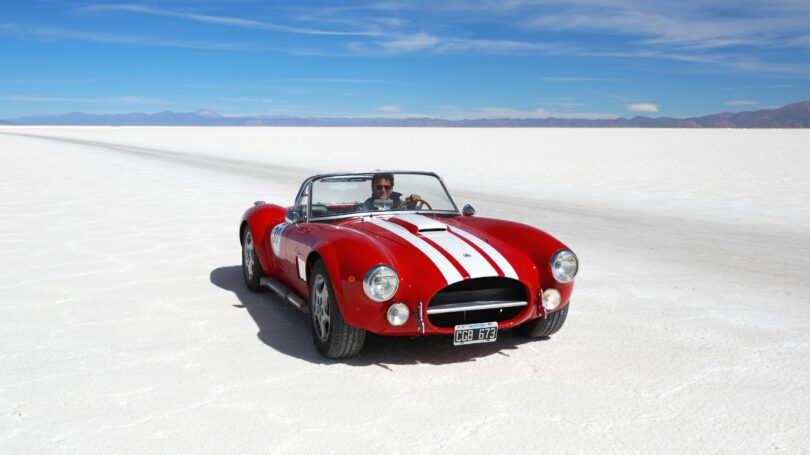
According to the Knight Frank 2017 Wealth Report, classic cars provided a 10-year return of 338%, the highest investment return of all collectibles during the period. While annual growth for collectible automobiles is expected to slow, analyst Dietrich Hatlapa predicts that “strong prices will be paid for the best cars by knowledgeable collectors this year.”
Collectible cars are classified into various categories for convenience. Collectors tend to favor one type over others, although some like Jay Leno have eclectic tastes. The major classes are:
- Antiques. Typically defined as an automobile produced before 1918, most were mass-produced, gas-powered vehicles. Examples include the 1917 Pierce-Arrow Runabout or the 1916 Woods Mobilette Roadster.
- Vintage. Automobiles manufactured between 1919 and 1925 are in this category, including the 1919 Studebaker Big Six and the 1924 Ford Model T.
- Classic. Automobiles produced between 1925 and 1948, such as the 1927 Aston Martin or the 1948 Jaguar, are considered “classics.”
- Muscle. These vehicles were generally two-door models with the most powerful engines possible. The 1967 Pontiac GTO and the 1966 Oldsmobile 442 were the epitomai of muscle cars.
- High-Performance. Automobiles designed for high acceleration and cornering speeds, also known as sports cars, fit into this category, the fastest being known as hypercars. Examples include the Aston Martin DBS V12 or the Ferrari 488 Pista.
- Exotic. This category comprises high-performance, luxury cars produced in limited quantities and available to only the wealthiest buyers. Examples include the Bugatti Veyron and the Königsegg Regera.
The most expensive car confirmed to be sold at auction was a 1962 Ferrari 250 GTO for $48.4 million in 2018. The leading classic car news source Hemmings Daily reported a possible higher sale for the same model car in 2013 for $52 million. The most expensive new car ever produced was a 2017 Rolls Royce Sweptail, which was customized for a single customer in 2017. The price for the luxury two-seater was approximately $19 million.
Sultan of Brunei
Hassanal Bolkiah, best known for his title of Sultan of Brunei, is the leader of an Asian country on the island of Borneo with some of the largest oil reserves in the world. Born the Crown Prince in 1946, Bolkiah became the head of state – Sultan – in 1959 and has ruled the country ever since. His collection of exotic automobiles is thought to include 3,000 to 6,000 cars with a total estimated value of $350 million. The pride of his collection is a custom Rolls Royce Silver Spur Limousine with 24K gold accessories. He reputedly owns seven McLaren Formula 1 racers manufactured during the 1990s, each with an estimated value today between $1.5 million and $1.8 million.
Other notable car collectors include:
- Jay Leno. The former TV host has amassed a collection of almost 200 automobiles and motorcycles worth an estimated $150 million. Leno is an active purchaser of vintage, classic, and exotic vehicles, ranging from a 1906 Stanley Steamer to a 2016 McLaren P1 GTR.
- Ken Lingenfelter. The former real estate mogul and son of a GM executive has collected 190 Chevrolet Corvettes, high-performance, and American muscle cars. According to his website, his collection is open to the public from time to time with ticket proceeds going to charity.
- Mukesh Dhirubhai. Considered one of the richest men in India, Dhirubhai’s collection of 170 Bentley, Maybach, Bugatti, Mercedes, and Rolls Royce vehicles are on display at his 60-story home, the most expensive private residence in the world.
8. Fine Wines
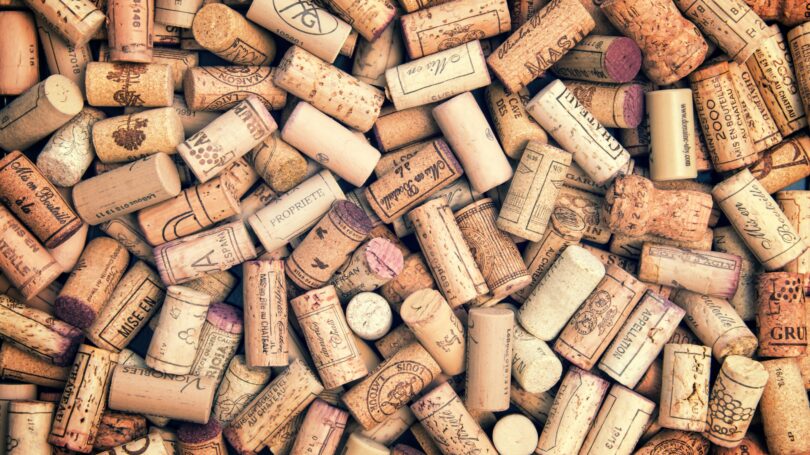
Mankind learned to enjoy the taste and effects of wine before he learned to read and write – with evidence of the fermentation of wild grapes extending backward to 10,000 BCE. The book of Genesis in the Torah and the Christian’s Old Testament relates the story of Noah becoming drunk after drinking wine he made. The oldest known winery, dating back to 4100 BCE, was found in Ancient Armenia.
The appetite for wine traveled with the European colonists around the world between the 1400s and 1600s. Wines from specific geographical regions became noted for their distinct taste, often taking the names of the country region where the alcohol was produced – Champagne, Bordeaux, Burgundy, and Riesling are such examples.
Wineries, hotels, and restaurants boast large inventories, but most are commercial wines held for sale, rather than fine wines. For example, Moldavia’s underground Milesti Mici Winery houses an inventory of 2 million bottles and is considered by Guinness World Records to be the largest in the world. Other private owners of large cellars are Hotel de Paris in Monte Carlo with 600,000 bottles, Bern’s Steakhouse in Florida with 500,000 bottles, and the Graycliff Hotel in the Bahamas with 250,000 bottles.
Since the composition of a wine collection is generally kept confidential and constantly changes by consumption and transactions, identifying the single most valuable collection is difficult and any claim to the title cannot be proven. Some have suggested that the number of bottles might be an indication of value, but such an evaluation does not consider the quality of the cellar.
Thomas Jefferson, the minister to France and the third President of the United States, was a noted French wine connoisseur, ordering direct from vineyards in Europe and shipping them to his estate. In 1985, two dozen bottles engraved with “Th.J.” of various vintages dated between 1784 and 1787 were found in a walled-up Parisian cellar, according to a feature in The New Yorker. The bottles claimed to be those of Jefferson, sold at auction several years later.
Christopher Koch
According to the Chicago Tribune, one buyer, Christopher Koch, paid a record price at auction of $156,000 for a single bottle of the 1787 Chateau Lafite. In later years, many experts doubted the authenticity of age and ownership, leading to a lawsuit between Forbes and the seller Michael Broadbent, and Christie’s auction house, according to Wine Spectator. Despite the loss on the fake wine, Koch continues to own 23,000 bottles of rare wine after selling a similar amount in a Sotheby’s auction for $21.9 million – reputedly the highest auction amount received for a wine auction, as reported by Wine Spectator. Koch explained his sale with his realization that he “could not possibly consume everything in [his] cellar.”
If not the most valuable, Christopher Koch’s remaining collection of 23,000 bottles of rare wines is likely in the top three or four cellars in the world. With the auction of about one-half of his wine cellar in 2016, it is expected that Mr. Koch would retain the most valuable vintages for his own consumption and pleasure. As a consequence, the value of the remaining wines is thought to be well over the $21 million received in the auction.
9. Chinese Porcelain
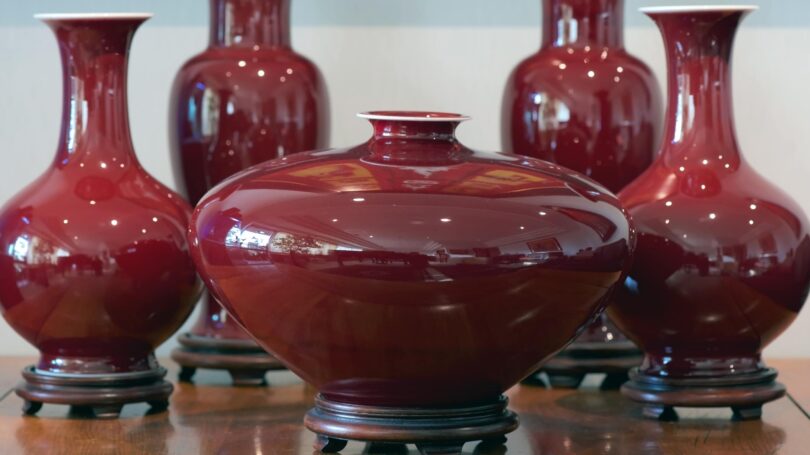
The price of ancient Chinese porcelain has soared in recent years, paralleling the growth of China’s economy and high net worth individuals interested and capable of reclaiming the country’s past. A collection of 100 pieces from the Tang, Song, Ming, and Qing dynasties (618-1912 CE) was sold in a Sotheby’s Asia auction for £45.8 million ($66.9 million USD). The seller, Englishman Roger Pilkington, had purchased the pieces over a span of 30 years dating back to the 1960s, for a total cost of less than $7,000 ($200,000 today), according to Sotheby’s.
Examples of prices paid for a single object include:
- Qing Dynasty Porcelain Vase. The elaborately decorated ceramic was sold in an auction to an unidentified Chinese industrialist for $84 million, according to CBC.
- Ru Guanyao Brush Washer Bowl. The small blue-green bowl from the Northern Song Dynasty sold for $36.7 million at auction in 2017, according to The Telegraph.
- Ming Dynasty Meiyintang Chicken Cup. The tiny porcelain wine cup was auctioned for $36.05 million during a Sotheby’s auction on April 8, 2014.
While collections of Chinese porcelain worth more than $100 million probably exist, their identities remain confidential. The owner of the most valuable private collection is still unknown.
10. Timepieces
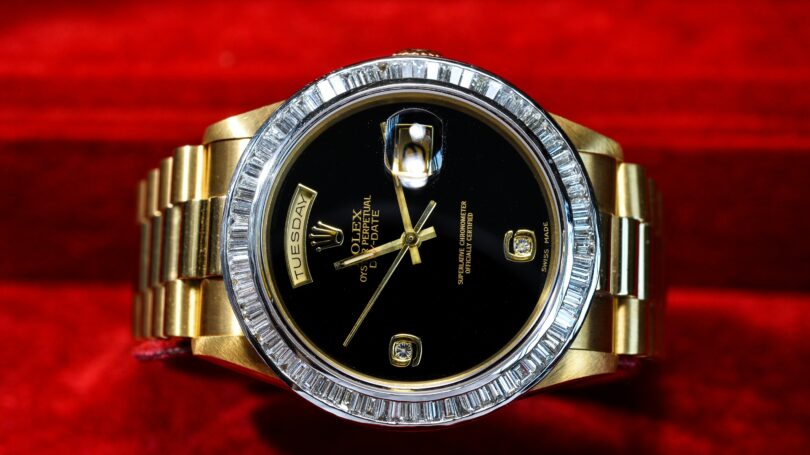
Men are the predominant collectors of timepieces – often referred to as “vintage” or unique watches – because women tend to consider a valuable watch as another piece of jewelry. A watch is often the only piece of personal adornment for a man, and its appearance is intended to signal the status of the wearer.
Classic watches are considered works of art by collectors while other timepieces convey a history like no other object:
- Sir Edmund Hillary is said to have attached a Rolex Oyster Perpetual automatic chronometer to the top of his anorak jacket on his historic trek to the top of Mount Everest in 1953, according to Edgar Daily.
- Neil Armstrong’s watch on his trip to the moon was an Omega Speedmaster Professional that now resides in the Smithsonian Space Museum, according to Air & Space magazine.
- Paul Newman’s Rolex Daytona, a gift from his actress wife Joanne Woodward, sold at auction for $17.8 million, The New York Times reports.
The value of a timepiece does not depend on age, but provenance (past owners), mechanical perfection, and beauty often enhanced by original artwork and precious gems. Examples include Eric Clapton’s 1987 Patek Philippe auctioned for more than $3.6 million, according to The Telegraph, or the 2013 A. Lange & Söhne Grand Complication with a retail price that year of $2.49 million, according to Business Insider.
While timepiece collectibles are within the capacity of the average millionaire, the more luxurious models from makers like Rolex, Hublot, Breitling, and Panerai can be found in the collections or on the wrists of ultra-successful businessmen, celebrities, and athletes including:
- Orlando Bloom. The infamous “Bling Ring,” a movie based off of a teenage burglar gang, reenacts an incident in which teenagers stole watches from the homes of Orlando Bloom and other celebrities, with an estimated value of $3 million in 2009, as reported by BBC.
- Mark Wahlberg. His gold Rolex collection includes a Yacht-Master II, a 50th-anniversary GMT-Master II ceramic with a green dial, and a Rolex Submariner with a black dial.
- Robert Downey Jr. The actor has collected an eclectic assortment of watches that was described in detail by GQ magazine.
- LeBron James. The famous basketball player is believed to have an excellent collection of Rolexes and Audemars Piguet, according to Business Insider.
While the identification of many timepiece collectors or the value of their collections is unknown, British record producer Michael Blakey has a notable collection of watches showcased in three YouTube videos – Part 1, Part 2, and Part 3 – which may be one of the world’s most valuable collections.
Final Word
Amassing one of the most valuable collections in the world requires dedication, expertise, and time. But the most important element is financial capacity since a single object can cost millions of dollars. As a consequence, few collections earn the title of “Most Valuable.”
The market for the most valuable objects is rife with conmen and fakes eager to take advantage of an unsuspecting billionaire. For example:
- Art forgeries, counterfeit coins, and suspect stamps frequently appear and are purchased by naive collectors.
- Christopher Koch is more remembered for his purchase of Thomas Jefferson’s fake wine than his fabulous cellar.
- Aljazeera reports of the Chinese town Jingdezhen whose inhabitants are so skillful at reproducing porcelain pieces attributed to the Qing and Ming dynasties that experts can’t tell the difference between the fakes and the real thing.
While the wealthy revel in their collection of valuable objects, collecting can be just as satisfying, if not financially rewarding, to the average person. The instinct to collect those things that bring us joy will be with us always. I occasionally open my large bag of taws, aggies, bumblebees, and onion skins won over years of playing Ringers for keeps on the dusty schoolyard of my elementary school. The memories triggered by those small round pieces of glass are just as sweet today as yesteryear. My daughter, now a mother, continues to keep her collection of Barbie dolls from the 70s to be enjoyed by her own children and grandchildren.
Are you a collector? What do you collect? Why do you collect?